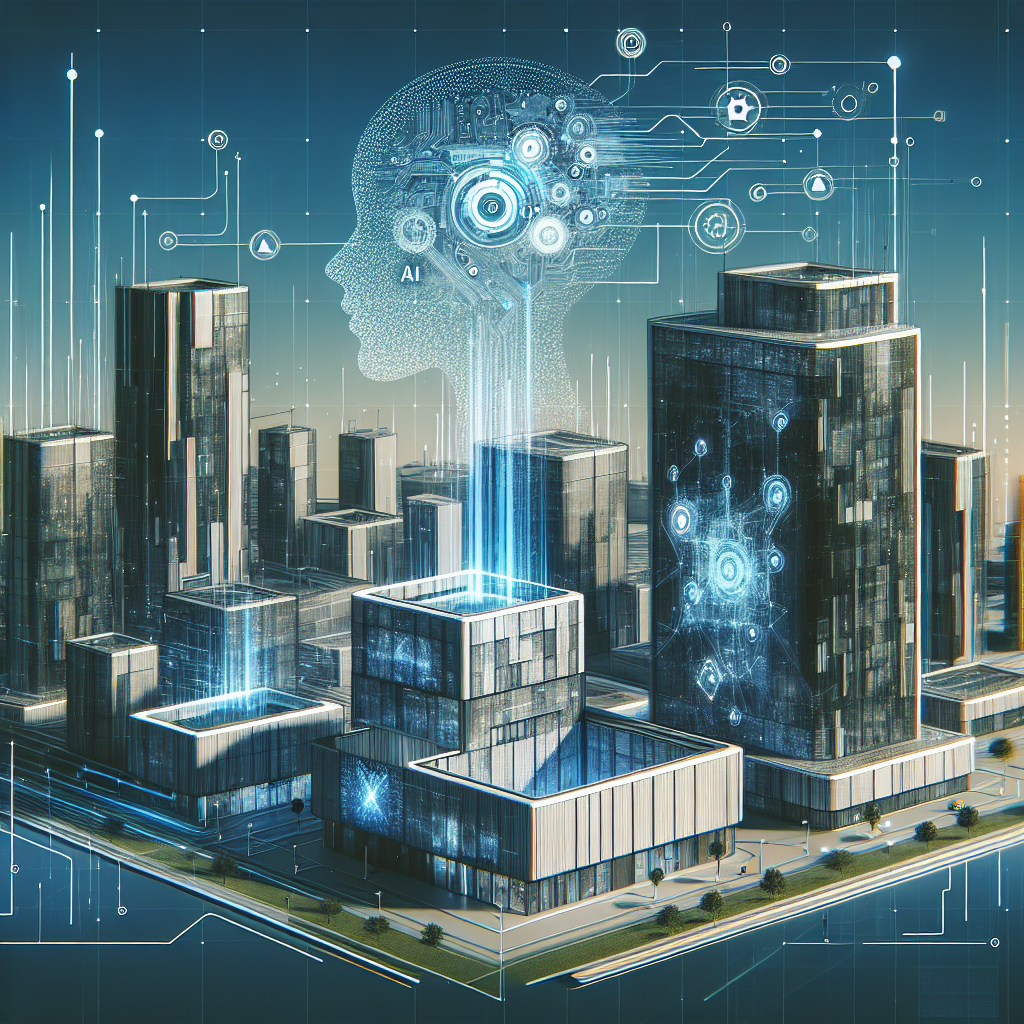AI and Architecture: Designing Buildings with Algorithms
In recent years, artificial intelligence (AI) has made significant advancements in various industries, and architecture is no exception. The use of AI in architecture has revolutionized the way buildings are designed, constructed, and maintained. From generating design concepts to optimizing building performance, AI has the potential to transform the field of architecture in ways we never thought possible.
AI in architecture is primarily used for two main purposes: generative design and building performance optimization. Generative design involves using algorithms to create complex design solutions based on a set of parameters and constraints. This allows architects to explore a wide range of design options quickly and efficiently, leading to more innovative and sustainable building designs.
On the other hand, building performance optimization uses AI to analyze and improve the energy efficiency, comfort, and overall performance of buildings. By simulating various scenarios and predicting how a building will perform under different conditions, architects can make informed decisions that result in more environmentally friendly and cost-effective buildings.
One of the most well-known examples of AI in architecture is the use of parametric design software, such as Grasshopper and Rhino, which allow architects to create complex geometric forms and structures that would be nearly impossible to achieve manually. By inputting parameters such as site conditions, building regulations, and client preferences, architects can generate thousands of design options in a matter of minutes, saving time and resources in the design process.
Another innovative use of AI in architecture is the development of smart building technologies, which use sensors and data analytics to monitor and control building systems in real-time. By collecting and analyzing data on energy usage, occupancy levels, and indoor air quality, smart buildings can adjust their operations to optimize performance and enhance the comfort of occupants.
AI is also being used to improve the construction process itself, by enabling robots and drones to perform tasks such as site surveying, material handling, and quality control more efficiently and accurately than human workers. This not only speeds up the construction process but also reduces the risk of accidents and errors, leading to safer and more reliable buildings.
Despite the many benefits of AI in architecture, there are also some challenges and concerns that need to be addressed. One of the main concerns is the potential impact of AI on the role of architects, as some fear that AI could replace human creativity and intuition in the design process. However, most architects see AI as a tool to enhance their creativity and productivity, rather than a threat to their profession.
Another challenge is the ethical implications of using AI in architecture, such as the privacy and security risks associated with smart building technologies. Architects need to ensure that the data collected by these technologies is used responsibly and transparently, and that appropriate measures are in place to protect the privacy of building occupants.
Despite these challenges, the future of AI in architecture looks promising, with new advancements and applications emerging every day. As AI technology continues to evolve, architects will have even more tools at their disposal to create innovative and sustainable buildings that meet the needs of society and the environment.
FAQs
Q: How is AI used in architecture?
A: AI is used in architecture for generative design, building performance optimization, smart building technologies, and construction automation. It helps architects create innovative design solutions, optimize building performance, monitor and control building systems, and improve the construction process.
Q: What are the benefits of using AI in architecture?
A: The benefits of using AI in architecture include faster and more efficient design processes, better building performance, safer and more reliable construction, and enhanced creativity and productivity for architects.
Q: What are the challenges of using AI in architecture?
A: The challenges of using AI in architecture include concerns about the impact on the role of architects, ethical implications of smart building technologies, and the need to protect the privacy and security of building occupants.
Q: How can architects leverage AI in their practice?
A: Architects can leverage AI in their practice by using parametric design software, smart building technologies, and construction automation tools to create innovative and sustainable buildings that meet the needs of society and the environment.
Q: What is the future of AI in architecture?
A: The future of AI in architecture looks promising, with new advancements and applications emerging every day. As AI technology continues to evolve, architects will have even more tools at their disposal to create innovative and sustainable buildings that meet the needs of society and the environment.

